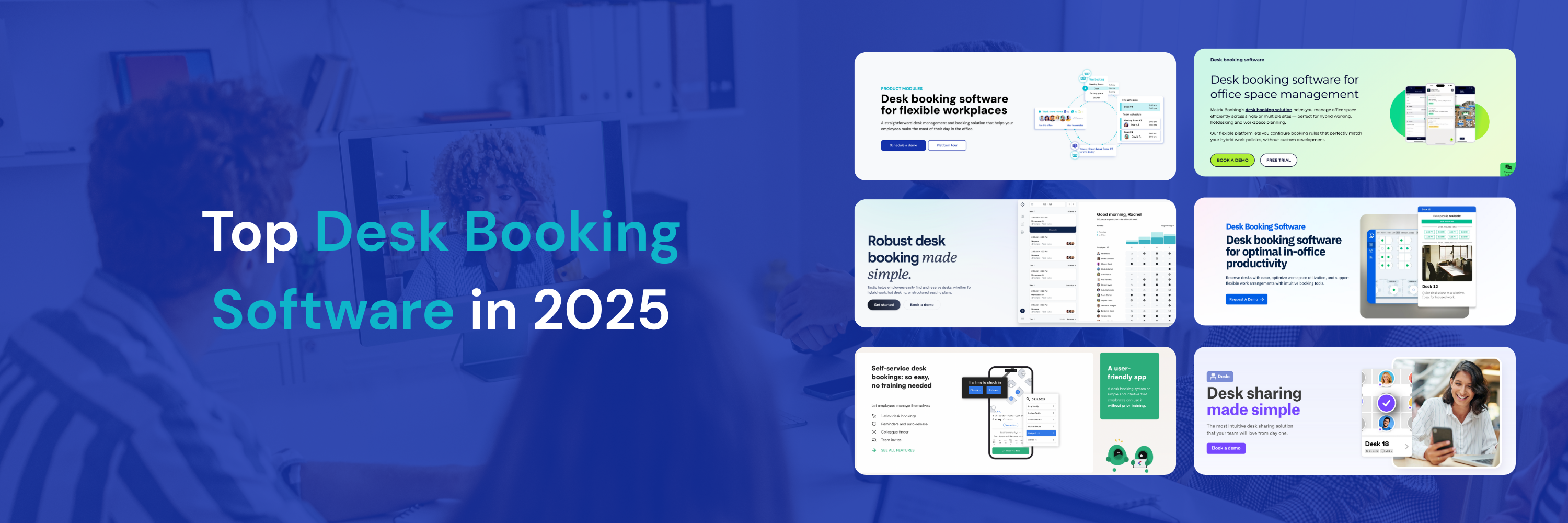In recent years, the world of work has undergone a massive transformation. The pandemic has brought about a new era of remote work, and companies have adapted and embraced the hybrid workplace – one that combines elements of both traditional office and remote work – as a result.
But while remote work and hybrid work arrangements remain prevalent in today's workplace, there has been a gradual return to the office. In a survey conducted by Microsoft, 3/4 of respondents admitted that company expectations were not enough to entice them back to the office – but 84% said they felt motivated to work in the office to collaborate and socialize.
This type of workplace offers many benefits, but also comes with numerous challenges that must be overcome in order for teamwork to thrive.For example, tools are needed to facilitate communication between employees in different locations. Fortunately, technology can facilitate collaboration in hybrid work environments and enable seamless teamwork.
TLDR:
- Hybrid workplace technology integrates tools like desk booking and collaboration platforms to create a flexible, future-ready work environment.
- The hybrid workforce is a growing trend that can offer many benefits, but also pose some challenges when it comes to collaboration
- Technology can mediate these challenges and create a sense of community in hybrid workplaces
- There are various tools and best practices that can help build relationships and trust between team members, regardless of location or time zones
- By leveraging the power of technology, companies can create a hybrid workforce that is both productive and engaged
Hybrid Workplace Technology: The Key to a Future-Ready Work Environment
Hybrid workplace technology refers to a suite of tools and platforms designed to support a seamless integration of in-office and remote work, fostering productivity and collaboration across diverse locations. This technology encompasses solutions such as desk booking software, wayfinding systems, hybrid work scheduling tools, and collaboration platforms like Microsoft Teams and Slack. These tools are essential for managing a hybrid work environment, where remote and in-office staff must coordinate their schedules, collaborate in real-time, and ensure efficient use of shared spaces like meeting rooms. By leveraging hybrid workplace technology, companies can create a more flexible and adaptive work environment that caters to different work styles and preferences.
The importance of hybrid workplace technology in future-proofing workplaces cannot be overstated. It enables organizations to adopt a hybrid work model that balances flexibility and productivity, making accommodating changing business needs and employee expectations easier. With advanced space management tools and scheduling software, companies can optimize the use of their office space, reducing overhead costs while ensuring a positive work experience. Furthermore, collaboration tools enhance communication and teamwork, bridging the gap between remote and on-site employees. As businesses continue to navigate the evolving work landscape, integrating hybrid workplace technology is critical to maintaining a cohesive, efficient, and future-ready work environment.

Workforce Collaboration: The Key to All Successful Workplaces
In today's business world, it's more important than ever for companies to find ways to facilitate collaboration among employees. After all, a company's success depends on its employees being able to work together effectively in order to get the job done.
There are a number of ways that technology can help to facilitate workforce collaboration. Video conferencing and instant messaging platforms, for example, can help employees communicate with one another, no matter where they are located.
Additionally, online project management tools can help teams keep track of deadlines and assigned tasks.
But, of course, it's not enough simply to have the right tools in place. Companies also need to make sure that their employees are properly trained on how to use them. In many cases, this will require investing in employee education and development programs.
Why Is Workforce Collaboration So Important in a Hybrid Workplace?
Workforce collaboration refers to the sharing of ideas and knowledge between employees, and helps build team morale and commitment, and improve communication and relationship.
By using technology to facilitate collaboration, employees today can easily set up virtual meeting rooms where they can communicate with each other in real time.
They can share documents, files and best practices, learn from each other and find new ways to improve their work – all while companies reap the many benefits that come with a collaborative workplace.
Reduced Isolation and Stronger Teams
Many companies are finding that a hybrid workforce model, which combines remote and on-site employees, is the most effective way to operate. This model allows for reduced isolation and stronger teams while providing most of the benefits of remote work.
Technology can play a big role in mitigating the challenges that come with managing a hybrid workforce. By providing employees with tools to stay connected to their work and each other, technology can create a sense of community and engagement and make employees feel like they are part of a team.
They can use video conferencing and chat platforms to bridge the communication gap between remote and on-site employees. Social media platforms can also be used to share company news and updates and provide a forum for employees to voice their opinions and ideas along with the usage of platforms like LinkedIn for sales outreach and recruitment purposes.
Higher Employee Engagement
Technology can also help managers stay in touch with their employees and get feedback on their performance. Employee productivity tracking software can give managers visibility into which employees are struggling and highlight areas where additional support may be needed.
And regular check-ins via video conferencing can help build relationships and trust between managers and employees.
In addition, project management software can help managers keep track of deadlines and assigned tasks. This ensures that everyone is pulling together and working toward common goals, creating a more seamless and effective collaborative environment for the hybrid workforce.
Increased Productivity
There are a number of tools that can facilitate collaboration between remote workers. These include video conferencing, project management software, and online chat platforms. They help employees stay connected and collaborate effectively even when they are not in the same location.
Don't forget best practices that foster collaboration among employees, such as encouraging employee communication outside of work (via social media or other online platforms). This can help build relationships and trust between team members, which is essential for effective collaboration.
Schedule regular meetings with team members to ensure everyone is on the same page and to address issues that may be hindering productivity. In this way, and by using the right technology, you can create an effective collaborative environment for your hybrid workforce that will boost productivity levels.
More Knowledge Sharing and Innovation
Barriers to knowledge sharing and innovation are well- documented. They include the fear of failure, competition, and the need to protect one's back. But there are also some very practical reasons why knowledge sharing and innovation don't happen as often as they should.
People are often too busy to share what they know, or they may not know how to share it in a way that is useful to others. However, technology can help overcome these barriers by providing tools that make it easier to share knowledge and ideas and contribute to greater collaboration and innovation in the workforce.
For example, social networking tools can connect people with similar interests and goals, making it easier for them to find each other. Similarly, project management tools can help teams collaborate more effectively by providing a shared space for planning, tracking progress, and sharing information.
Better Workplace Experience
In a hybrid workplace, technology can help bridge the gap between employees who work in different locations. Through the use of video conferencing and instant messaging tools, employees can stay connected and collaborate on projects in real time.
Technology can also help employees who work in different time zones or with different shift schedules work together seamlessly. Online scheduling tools make it easy for employees to communicate their availability and request time off from work.
Employees who work remotely can also use technology to stay connected with their colleagues and participate in the company culture. Many remote workers use social media platforms to stay up to date on company news and events and to connect with other employees.

Workforce Collaboration in Hybrid Workplaces
Technology can help create a sense of community in hybrid workplaces. By providing platforms for social interaction, employees can stay connected even when they are not in the same place, building relationships and trust.
There are a number of different platforms and tools that can be used to help employees work together regardless of location and create a more cohesive work environment. Examples include video conferencing, online chat, and document sharing that enable both synchronous and asynchronous communication.
But remember, when using technology to facilitate employee collaboration, it's important to consider the different ways employees prefer to communicate. Some employees may prefer face-to-face interaction, while others are more comfortable with online communication.
It's important to offer options that accommodate employees' different preferences to create an inclusive environment that caters to everyone’s needs.
Technology That Helps With Workforce Collaboration in Hybrid Workplaces
The lack of a centralized platform for work planning and coordination can make it difficult for teams to collaborate effectively and achieve their goals. Luckily, there are several types of technology that can help enable effective communication, coordination and collaboration. Here are some of them:
- Video conferencing can be used for meetings, training, and other types of interactions between employees. Such tools can also be used by team leaders to coordinate teamwork more easily.
- Project management software can be used to track tasks, deadlines and progress on projects. This type of software often includes features that allow team members to communicate directly with each other.
- Chat software can be used for real-time communication between employees working on the same project or task. This type of software often includes features such as file sharing and video conferencing.
- Space booking software, such as YAROOMS, provides interactive floor plans where employees can quickly find colleagues and book desks near them. This way, everyone knows which rooms are available and where their colleagues are working.
- Hybrid work scheduling and planning calendars bring more transparency and collaboration to the workplace. It allows everyone to schedule their work (at home, in the office, out of the office), stay up-to-date on each other's schedules, avoid spontaneous interactions, and book spaces for team activities.
- Social media platforms can be used to share updates, announcements and information about projects, and help with networking and building relationships among employees.
- Artificial Intelligence (AI) and Machine Learning (ML) are no longer futuristic concepts; they're becoming integral to our work lives. AI-powered tools can automate tasks, analyze data for insights, and personalize employee experiences. For example, chatbots can instantly support employees, regardless of location, streamlining workflows and improving response times.
- The Internet of Things (IoT) is another powerful force shaping the hybrid workplace. IoT devices, from smart lighting and temperature controls to occupancy sensors, can collect real-time data on how office spaces are used. This data can enhance the workplace experience for both in-office and remote employees.
Strategies for Implementing Hybrid Workplace Technology
Successfully implementing hybrid workplace technology requires a strategic approach tailored to your organization's unique needs and work models. Here's how to do it effectively.
Assessment of Technology Needs Based on Work Models
Before you invest in any new workplace technology, carefully assess the specific needs of your hybrid workforce. Identify the types of work arrangements in place, such as:
- Fully remote: Employees work exclusively from home or other remote locations.
- Fixed hybrid: Employees have a set schedule, dividing their time between the office and remote work.
- Flexible hybrid: Employees have the autonomy to choose when and where they work.
This initial assessment helps determine the essential workplace technology required to facilitate seamless communication, collaboration, and productivity across various work models. For instance, a company with a predominantly remote workforce might prioritize virtual collaboration tools. At the same time, a fixed hybrid model may necessitate a robust desk booking system like the one offered by YAROOMS, designed to accommodate different space booking scenarios.
Building a Scalable Tech Stack for Growing Teams
As your team expands, the technology infrastructure should scale accordingly. Choosing solutions that accommodate future growth prevents bottlenecks and ensures smooth transitions as your organization evolves. A scalable tech stack includes tools that can:
- Integrate seamlessly with existing systems.
- Support a growing number of users and data volumes.
- Adapt to emerging technologies and changing work patterns.
Best Practices for Training and Adoption
The success of any technology implementation relies heavily on user adoption. Invest in comprehensive training programs to familiarize employees with the new tools and demonstrate their value. Consider the following:
- Hands-on workshops: Provide practical, interactive sessions where employees can learn by doing.
- Role-based training: Tailor the content to specific user roles and responsibilities.
- Ongoing support and resources: Offer readily accessible help documentation, FAQs, and support channels for resolving issues. You can use tools like Article Summarizer to create succinct support resources.
Encourage open communication and gather feedback to address any challenges. This approach fosters a smooth transition and maximizes the return on your technology investment.
Workforce Collaboration: FAQ
If you’re interested in learning more about collaboration in the workplace, check out our FAQ below:
What Is Collaboration in the Workplace?
Collaboration in the workplace can be defined as two or more people working together to complete a task or reach a goal. Collaboration can happen in-person or online, and it involves the sharing of information, ideas, and resources.
There are many benefits of collaboration in the workplace, like increased productivity, creativity, and knowledge sharing. When employees collaborate, they can learn from each other and build relationships that can improve morale and job satisfaction.
Additionally, collaborating can help reduce stress levels and improve work/life balance.
What Are the Benefits of Workforce Collaboration?
Workforce collaboration can have a number of benefits for businesses, including increased productivity, better communication and decision-making, and reduced costs.
When employees are able to work together effectively, they can share information and ideas more efficiently, which can lead to better results.
In addition, workforce collaboration can help to improve employee morale by fostering a sense of teamwork and cooperation.
What Are the Essential Skills for Collaborating at Work?
In order to facilitate successful collaboration in the workplace, team members must be able to communicate effectively with one another. This involves being able to:
- share information and ideas clearly
- listen attentively to others in order to fully understand their perspective
- compromise and negotiate in order to reach a consensus that everyone can agree on
- work well together as a team in order to achieve common goals
How to Improve Team Collaboration in the Workplace?
As you can see, there are a few key things you can do to improve team collaboration in the workplace. The most important thing is to make sure everyone is on the same page by setting clear expectations and goals and letting employees know what they need to do to achieve them.
Be sure to break tasks down into manageable pieces and set clear deadlines, while encouraging open communication and feedback. In a healthy environment, everyone should have the confidence to talk openly about their progress and challenges.
It is also important to acknowledge employees' work. When everyone knows what goals they are working toward and feels valued, they are more likely to collaborate effectively. This helps create a positive team environment where employees feel supported and motivated.
If employees would like to collaborate but do not have many opportunities to do so, create more opportunities for team members to work together on projects. This can be done by assigning tasks that require collaboration or by giving teams more time to work on projects together.
On the other hand, if they have opportunities to collaborate but do not collaborate well, provide training and development opportunities that focus on teamwork skills. This can help team members learn to communicate better and work toward common goals.
Creating a culture of collaboration can be accomplished by encouraging and rewarding employees for working with others and making it easy for employees to find and connect with others with similar interests or expertise.
There is no shortage of benefits to collaboration, and there are numerous methods for improving team dynamics and fostering cooperation among employees. This, in turn, leads to greater productivity and success in the workplace. Regardless of which tools and best practices you choose, always keep in mind the importance of a solid strategy based on data and analytics and aligned with the needs of your people.
%20(1)-3.png)











